
Volkswagen Golf R (2014-2016) review
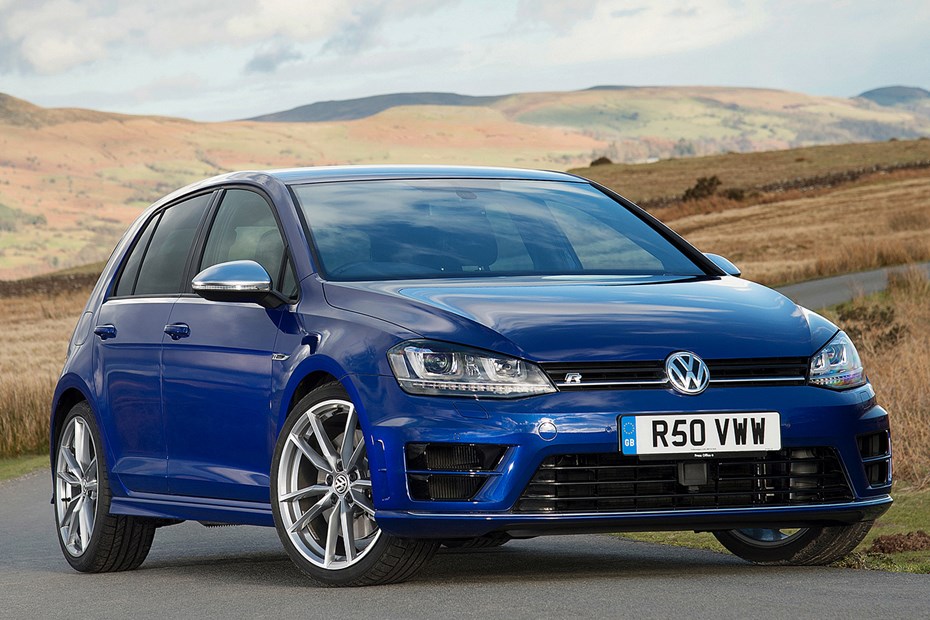
At a glance
| Price new | £31,000 - £34,155 |
|---|---|
| Used prices | £6,885 - £14,995 |
| Road tax cost | £265 - £315 |
| Insurance group | 34 |
Get an insurance quote with

|
|
| Fuel economy | Not tested to latest standards |
| Range | 460 - 484 miles |
| Number of doors | 3 - 5 |
| View full specs for a specific version | |
Available fuel types
Petrol
Pros & cons
- Very fast
- Handles well
- Lots of specialist knowledge
- Excellent rivals
- Less boot space than GTI
- Don't let it get stolen!
Volkswagen Golf R (14-16) rivals
Overview
The Volkswagen Golf R is the perfect used car for hot-hatch buyers who think a regular Golf GTI hot hatch is not potent enough. The idea of a large-engined, range-topping Golf dates back to the 1990s and the 2.8-litre Golf Mk3 VR6 – but thankfully, improved with subsequent generations from the Golf Mk4 V6 4Motion to the Golf Mk 5 R32, with its 3.2-litre V6.
In 2010 the Golf R went for a more efficient, agile approach – a formula that still underpins most high-performance hatches you can buy new. A high-output 270hp 2.0-litre engine replaced the heavier V6 for the Golf R Mk6. For the Volkswagen Golf Mk7 we’re looking at here, 2014’s range-topping R perfected the formula.
Boasting a full 300hp, it is far more powerful than a contemporary Golf GTI. 0-62mph takes as little as 4.9 seconds – yet because the 2.0-litre four-cylinder turbo TSI engine is so efficient, it can also average up to 40.9mpg. It’s a very tempting combination of pace and economy.
Unlike the front-wheel drive Golf GTI, the Golf R gets 4Motion all-wheel drive for secure handling in all weathers. The styling is enhanced with even lower suspension, bigger alloy wheels and, inside, a luxurious look with leather and Alcantara R-branded seats, and blue needles for the instruments.
Volkswagen Golf R Mk7 buying guide
The 2014 Golf R was a sales hit right from the start, virtually matching Golf GTI volumes. This means there’s a good variety of cars for sale from both independent dealers and VW franchises – and instead of carrying the £4,000 premium over the Golf GTI when new, there’s not much difference in used values. In 2017 the Golf range was refreshed, often referred to as Mk 7.5. The Golf R got an upgrade to 310hp and an optional performance pack.
While you can get a six-speed manual Golf R the seven-speed DSG dual-clutch automatic is arguably the better choice, and it sold in much greater numbers. Hot hatch traditionalists will appreciate the availability of three-door models, but for real stealth the practical Golf R Estate is a subtle, fast choice.
You can pick up a 2014-16 Golf R from around £11,000, while 2017-2020 Mk 7.5 Golf Rs for sale start around £16,000… but before you do so, be sure to read through our top 10 used car buying tips when considering a Volkswagen Golf R.
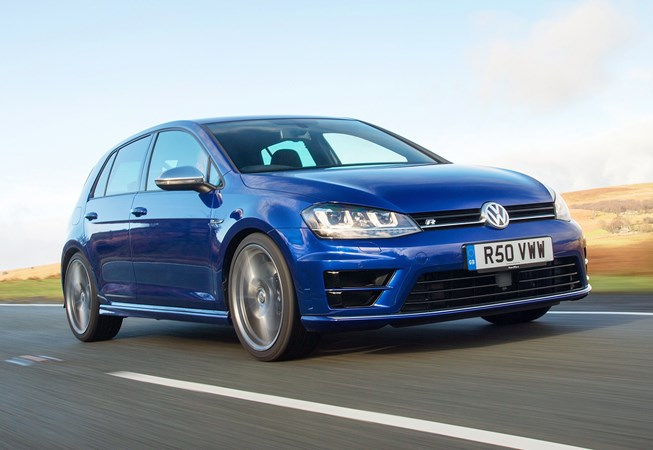
Volkswagen Golf R Mk7 known faults and common problems
1. Hidden history or accident damage
It’s a high-performance hot hatch, so the chances of mishaps and attempted theft are high. Scour that beautifully-finished bodywork for signs of any areas that are less than beautifully finished, with patchy paint finish and uneven panel gaps. Also be mindful of damage that can only happen during a track-day – such as gravel rash on the underside and even evidence the car’s been rolled. The Golf R is the only Mk7 Golf in which the ESC stability control can be fully disengaged.
2. Manual gearbox – clutch
Exuberant driving can also accelerate clutch wear on manual models. Heavy-footed starts, making use of the Golf R’s 4Motion traction, can take a toll on the clutch, and sometimes even lead to problems with the dual mass flywheel (DMF). It’ll be a four-figure sum to fix this. Make sure the clutch is not slipping, isn’t overly heavy, doesn’t ‘bite’ in an odd pedal position and generally feels as smooth and seamless in operation as you’d expect of a Golf.
3. Golf R Mk 7.5 – Performance Pack
The Performance Pack, introduced in 2017 with the Mk 7.5 facelift, is a desirable option. A limited 155mph top speed became 166mph (the estate is faster still), with bigger lightweight brakes to help shed the extra speed. Identify them from their 19-inch Spielberg alloys, silver brake calipers with ‘R’ logo and a rear roof spoiler that was said to add 20kg of downforce.
4. Alloy wheel originality and damage
The standard wheels are 18-inch Cadiz rims. The optional 19-inch Pretoria wheels are very desirable, as they look fantastic. But they can be easily bucked if the driver has been caught out by a pothole – vibration through the steering wheel is the giveaway. Don’t fall for the old ‘it only needs a wheel balance’ line: if it was that easy, they would have had it done. No, it’s more to do with the eye-watering £800 cost of a new Pretoria wheel.
5. Timing chain – EA888 2.0 TSI engine
The 2.0-litre TSI engine has a timing chain instead of a timing belt. Theoretically, this doesn’t need replacement but it will wear faster with neglected servicing and prolonged high-speed use. Experts suggest replacing it every 100,000 miles.
Listen out for any rattling, particularly when starting up from cold. Any rattling coming from the left-hand side of the engine (when looking under the bonnet – driver’s side on RHD cars) points to timing chain wear. The engine management will show a warning light if the chain is stretching, so as with any complex modern car, a diagnostic code reader is your friend here.
6. Oil condition and level, service history
The EA888 engine can use oil particularly if it’s been driven in a spirited way. It’s always worth checking the dipstick and making sure it’s not hovering around the low marker – or, worse still, below it. Volkswagen offers a choice of variable or fixed service intervals, and if the car is on the variable plan then it must use long-life oil. Changes – which include the filter – could be stretched for up to 19,000 miles or two years.
A car with long-life oil should have green, rather than gold, clean oil if it has just been serviced. We have first-hand experience of VW franchises charging for a long-life plan, but using the standard oil, when asked to do a service ahead of schedule. The service history should tell you all – and of course, you should make sure there aren’t any gaps within it. Ex-lease cars will almost always be on the variable plan.
7. Volkswagen Golf R Mk 7.5 – 2017 facelift
The Golf R was facelifted in 2017: this is referred to as the Golf 7.5, and has 10hp more than the pre-facelift car (taking it up to 310hp). There were styling tweaks, but because the R is already pumped-up, they were less obvious than on other variants – both pre- and post-facelift look the part. Xenon headlights were replaced by LED units (gaining distinctive LED daytime running lights), and the infotainment upgraded to an 8.0-inch screen or a fully-touchscreen 9.2-inch system (some actually miss having a physical volume knob). A smart addition was a configurable digital instrument display instead of the analogue dials of old.
8. Infotainment – Apple CarPlay
The Golf R’s infotainment system was updated throughout its lifetime. All cars have a touchscreen setup, with the later 8.0-inch and full 9.2-inch systems the most desirable. Most of them offer Apple CarPlay and Android Auto functionality – but early cars with the basic system, up to 2015, do not. There are third-party upgrades for VW’s MIB 1 and MIB 2 systems which can enable CarPlay, but they’re not cheap.
9. 4Motion Haldex and DSG gearbox – transmission service history
Both the DSG gearbox and Haldex 4Motion system demand regular oil and filter changes – something that those who don’t use a Volkswagen dealer or specialist garage may overlook. The 4Motion system, for example, needs regular oil and filter changes every three years or 20,000 miles to remain in tip-top condition, it’s 40,000 miles for the DSG. Definitely scour the service history for evidence of this.
10. VW Golf R theft – history and measures
The Volkswagen Golf R has gained an unwelcome popularity among car thieves. Blame its super-high, easily-deliverable performance, straightforward drive (particularly the DSG), plus the practicality and big boot that the underworld can put to good use. So make all the normal checks into the history of a car you’re considering buying. It’s worth investing in suitable security measures, such as a steering wheel lock or tracker alarm. Also buy a Faraday pouch for the keys and don’t leave them in sight. Garaging your Golf R is a good idea if you can, too.
Practicality and safety
There’s isn’t a lot to separate the regular Golf and the R in this respect. In fact, Volkswagen Golf R practicality is only hampered by a slightly smaller boot space than regular Golfs. The load space floor has had to be raised slightly to fit the four-wheel drive system, so boot volume drops from 380 litres to 343.
It was available in both three- and five-door body styles, unlike some rivals, and adults can fit comfortably in the back. We wouldn’t try with more than two, though. You get a generously sized glovebox and a decent cubby underneath the armrest between the front seats, too.
As we’ve come to expect from the more premium German car companies, there are loads of Volkswagen Golf R safety systems in place to keep both occupants and pedestrians out of trouble. It’s for that reason the Golf has been awarded a maximum five stars in the Euro NCAP crash tests.
Watch: Euro NCAP crash test video
Over the GTI, the R model gets adaptive cruise control and a low-speed automatic emergency braking function. There’s also a set of standard Bi-Xenon headlights, LED daytime running lights and LED tail lights. You also get that four-wheel drive system, which is likely to help when conditions get slippery.
Other safety equipment installed includes a number of airbags, an automatic post-collision braking system (to prevent more collisions once one has occurred), the Driver Alert System (which measures and warns of fatigue) and Isofix child seat mounting points.
You can also order a number of optional extras to boost safety. Automatic high beam headlights, a lane departure warning system and a heated windscreen. There’s also an optional side airbag for rear seat passengers in five-door models.
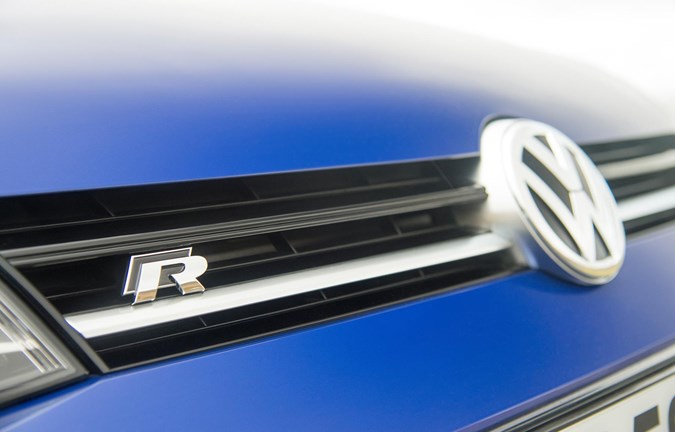
Interior
Being the flagship of the Golf Mk7 and Mk7.5 range, there was ample standard kit on the R. It was possible to bump the price up considerably by choosing a number of the optional extras available. Included in the car’s basic list price were adaptive cruise control, a touchscreen infotainment system, parking sensors and a race-inspired fabric interior.
There’s a sense of familiarity here if you know what a regular Golf’s interior is like. The controls are all facing the driver to make them feel totally immersed in the experience, while all of the switchgear and plastics feel very high quality. And the screens on the instrument panel and multimedia system are clear and easy to read too.
We particularly liked the sports seats you get on the R, which we found supportive and comfortable over long distances. The interior of the Golf R looks just as good with the standard cloth seats too. We’d forget the leather, if it was us.
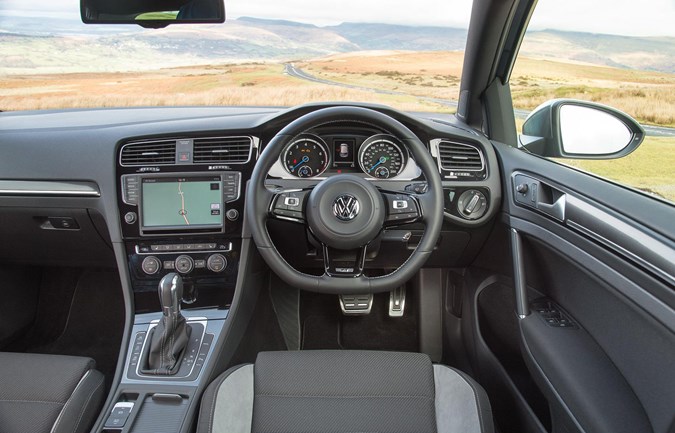
Comfort
It’s better than you might expect. While the ride is definitely sportier than your average hatchback – and thus bumpy roads feels bumpier and potholes jolt through the entire car’s chassis – Volkswagen Golf R comfort levels are actually fairly high.
The seats are particularly good. They’re supportive but don’t hem you in completely like some race-inspired ‘bucket seats’ tend to do. That makes it easy to get in and out of the car.
Road noise does filter into the cabin, especially at motorway speeds, but you can forgive the R that since the engine sounds absolutely fantastic. It’s not too loud either, unless you switch it into sport or Race mode; in that case the vicious engine note gets much louder indeed.
We only tried the R with the optional Dynamic Chassis Control, so you may find the ride on standard suspension is a little more uncomfortable. It allows you to either firm-up or soften the responses at the touch of a button, while the standard-fit suspension is fixed.
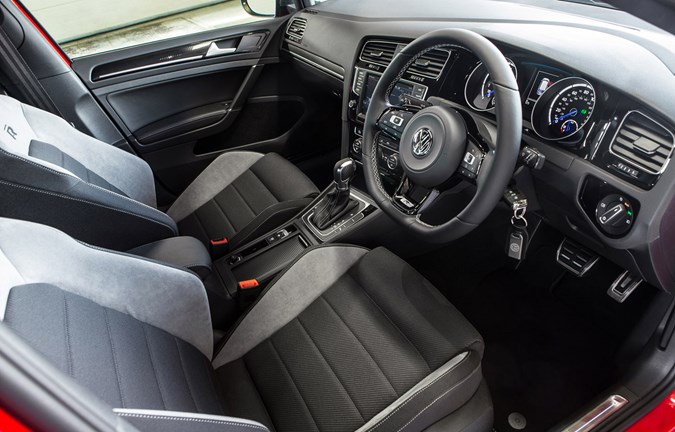
Running costs and MPG
The more efficient DSG transmission gives you the lowest costs; fuel economy is claimed 40.9mpg and CO2 emissions are 159g/km. Manual gearbox-equipped cars return a claimed 39.8mpg and 165g/km. During normal driving we saw the manual version returning around 35mpg, but expect that to tumble rapidly as you drive faster.
For the lowest Volkswagen Golf R emissions you’ll need a DSG version. That makes it possible for CO2 to be expelled at a rate of 159g/km, which is low for a 300hp hot hatch of this age. There really isn’t a huge amount you need to worry about regarding Volkswagen Golf R reliability. It has a camchain and there’s extensive independent specialist knowledge out there.
The interior feels well-built and robust, while the 4Motion four-wheel drive system is tried and tested in several Volkswagen products. Even the optional DSG automatic gearbox is known for its reliability.
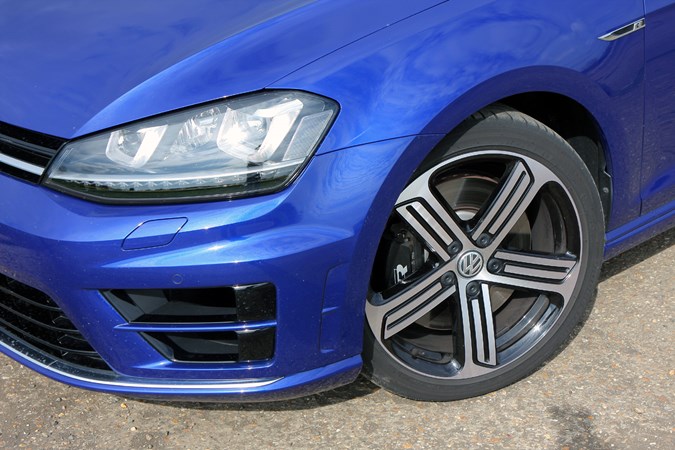
What’s it like to drive?
As you’d expect for a car at the pinnacle of the Mk7 and Mk7.5 range, Golf R performance is still impressive by today’s standards. The 2.0-litre turbocharged petrol engine is the same as found in the Golf GTI, but VW’s engineers heavily reworked it to produce 80hp more. Headline figures, then, are power of 300hp and torque of 380Nm available between 1,800rpm and 5,500rpm.
Thanks to that latter it’s a very flexible engine, and you’ve got impressive power reserves in almost any situation. It’s smooth and easy to drive slowly too, though. There’s a fairly linear power delivery considering the engine’s turbocharged nature. You don’t get a sudden punch in the back, it’s more of an increasingly exciting ferocity the higher up the revs you go.
As you get towards the redline end of the rev range you’ll find a car with a savage power delivery that slingshots you up the road. It feels every bit as quick as its acceleration figures suggest, covering 0-62mph in 4.9 seconds for the automatic or 5.3 seconds with the manual.
The six-speed manual has a very satisfying shift action – it’s a short throw yet it’s solid and feels very robust, which inspires confidence. Sure, it’s not the fastest way to play Golf, but it’s certainly more satisfying for the common enthusiastic driver than an automatic.
You can alter the engine’s response using the Driver Profile Selector button, which allows the driver to choose between Eco, Normal, Race or Individual settings; the latter allows you to configure each adjustable parameter individually for your own bespoke ‘preferred’ setting.
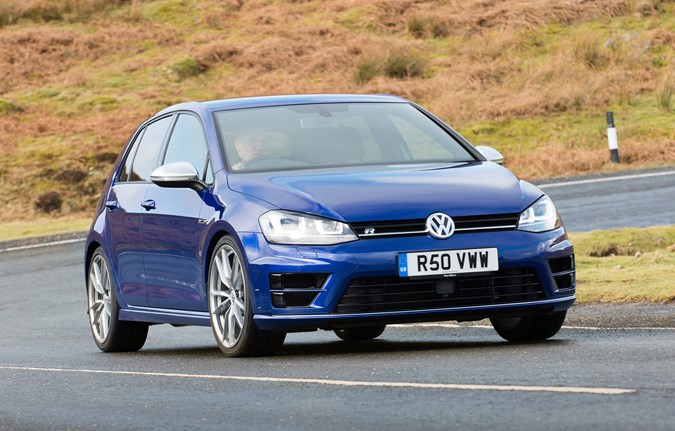
Handling
The first thing you need to know about the way the Golf R handles is there’s an absolute lorry load of grip on offer. While the GTI is front-wheel drive, the R makes use of the firm’s 4Motion four-wheel drive system for superior traction and confident handling in all situations.
It works by diverting torque to the rear wheels when it detects the front ones start to slip. In extreme cases it can even send all power to the rear wheels, or some to either end of the car as required. The system reacts in fractions of a second, which means you’re never struggling for grip.
So it has go-anywhere capability, but at the expense of excitement? Not exactly – the Golf R is a rewarding car to drive. Not only does it feel seriously fast but it’s composed and balanced when cornering too.
The steering is surprisingly good, full of feedback and nice and responsive. VW reworked the Golf’s steering for the R and it certainly shows. Other cars on the same platform can only dream of this sort of precision.
While normal driving makes the R feel nearly peerless, those who enjoy taking the car to its limits will feel short changed if they’ve tried the BMW M135i. At the limit the Golf’s front washes wide, where the BMW offers a level of adjustability in corners by using your right foot. To provide more engagement, Volkswagen built in a system where the driver can either have full stability and traction control operational, or a Sport mode which allows a little more slip before intervening.
The steering can be adjusted using the Driver Profile Selection button, which means you can add weighting by choosing Sport or Race modes. The latter also allows the traction control to be switched off altogether, should you find yourself on a race track where you don’t require electronic intervention to prevent crashes.
Available as an optional extra, Adaptive Chassis Control allows the driver to use the Driver Profile Selection feature to sharpen up the handling for ultimate cornering or soften it for the most comfortable ride.
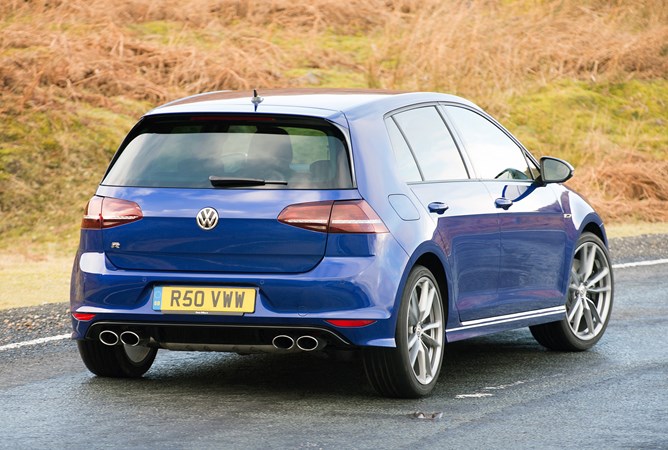



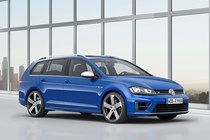
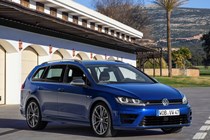
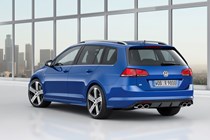
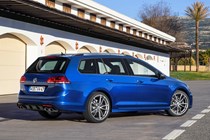

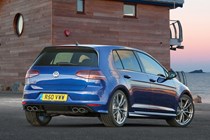
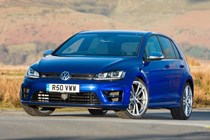

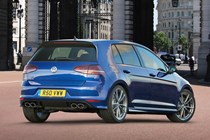
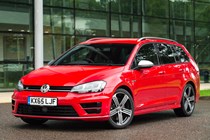

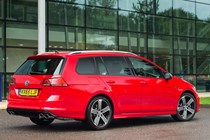
.jpg)
.jpg)
.jpg)
.jpg)
.jpg)
.jpg)
.jpg)
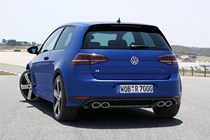
.jpg)
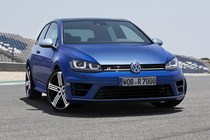
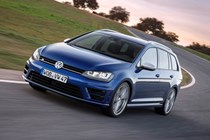
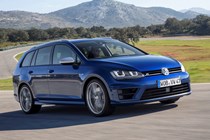
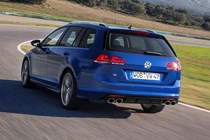



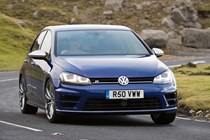
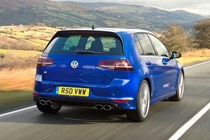
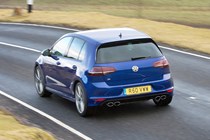
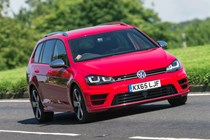
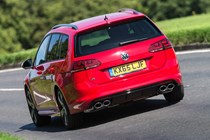

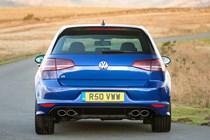

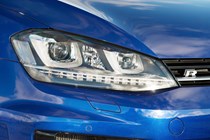
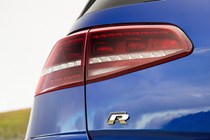

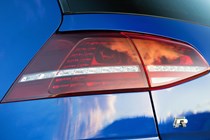
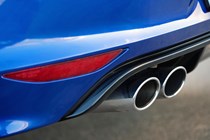

.jpg)
.jpg)
.jpg)
.jpg)
.jpg)
.jpg)
.jpg)
.jpg)
.jpg)
.jpg)
.jpg)
.jpg)
.jpg)
.jpg)



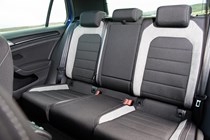
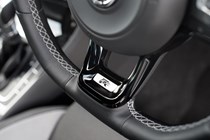
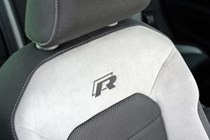
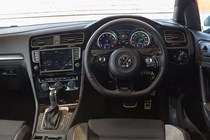
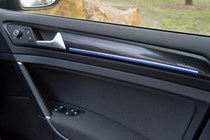

.jpg)
.jpg)
.jpg)
.jpg)
.jpg)
.jpg)
.jpg)
.jpg)
.jpg)
.jpg)
.jpg)
.jpg)
.jpg)
.jpg)
.jpg)
.jpg)
.jpg)
.jpg)
.jpg)
.jpg)
.jpg)
.jpg)
.jpg)
.jpg)
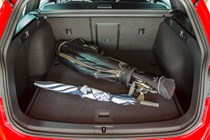
.jpg)
.jpg)
.jpg)
.jpg)
.jpg)

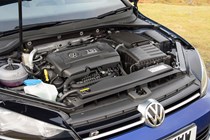
.jpg)
.jpg)
.jpg)
.jpg)
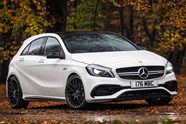















.jpg?quality=50)
.jpg?quality=50)
.jpg?quality=50)
.jpg?quality=50)
.jpg?quality=50)
.jpg?quality=50)
.jpg?quality=50)

.jpg?quality=50)





















.jpg?quality=50)
.jpg?quality=50)
.jpg?quality=50)
.jpg?quality=50)
.jpg?quality=50)
.jpg?quality=50)
.jpg?quality=50)
.jpg?quality=50)
.jpg?quality=50)
.jpg?quality=50)
.jpg?quality=50)
.jpg?quality=50)
.jpg?quality=50)
.jpg?quality=50)









.jpg?quality=50)
.jpg?quality=50)
.jpg?quality=50)
.jpg?quality=50)
.jpg?quality=50)
.jpg?quality=50)
.jpg?quality=50)
.jpg?quality=50)
.jpg?quality=50)
.jpg?quality=50)
.jpg?quality=50)
.jpg?quality=50)
.jpg?quality=50)
.jpg?quality=50)
.jpg?quality=50)
.jpg?quality=50)
.jpg?quality=50)
.jpg?quality=50)
.jpg?quality=50)
.jpg?quality=50)
.jpg?quality=50)
.jpg?quality=50)
.jpg?quality=50)
.jpg?quality=50)

.jpg?quality=50)
.jpg?quality=50)
.jpg?quality=50)
.jpg?quality=50)
.jpg?quality=50)


.jpg?quality=50)
.jpg?quality=50)
.jpg?quality=50)
.jpg?quality=50)